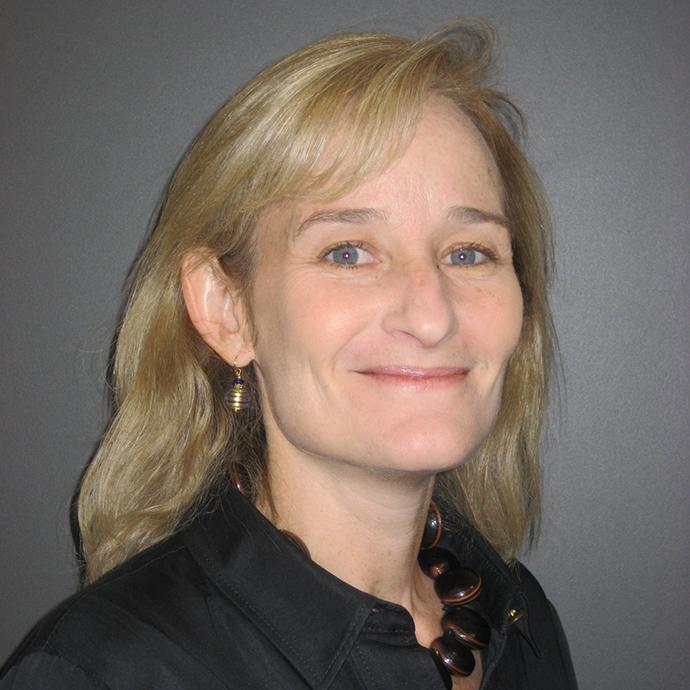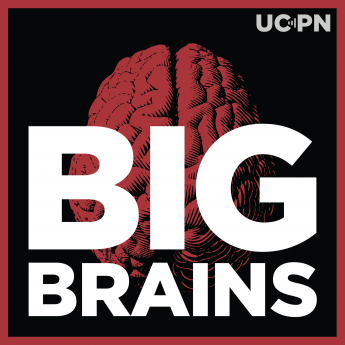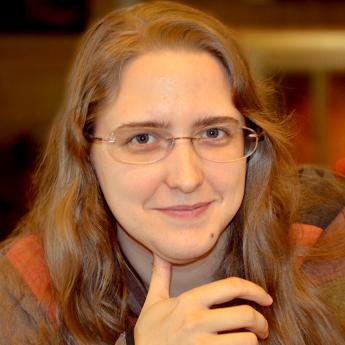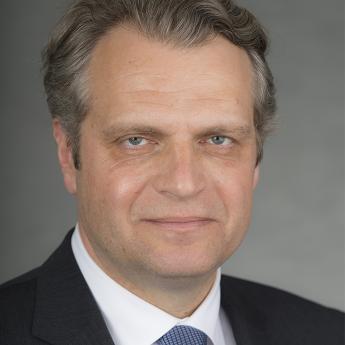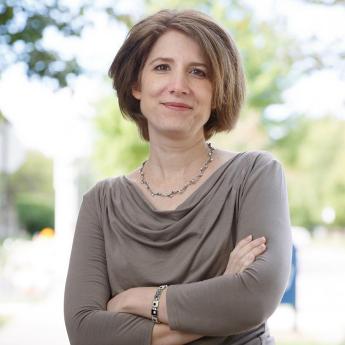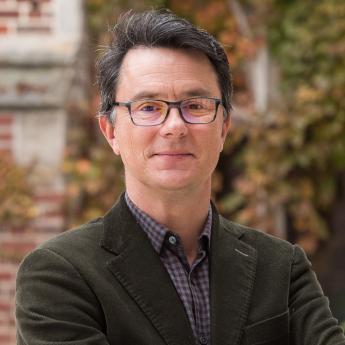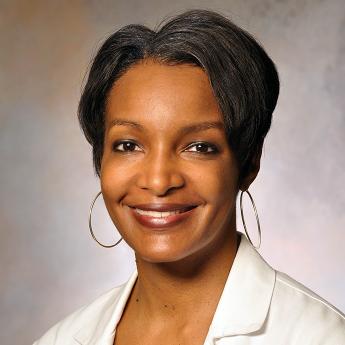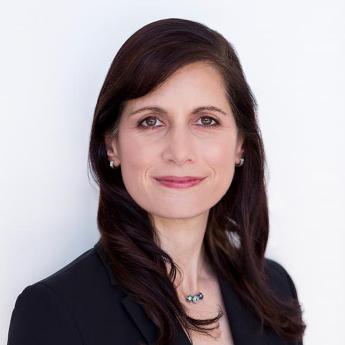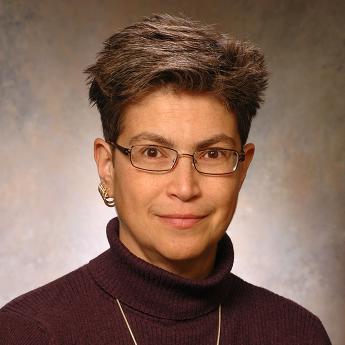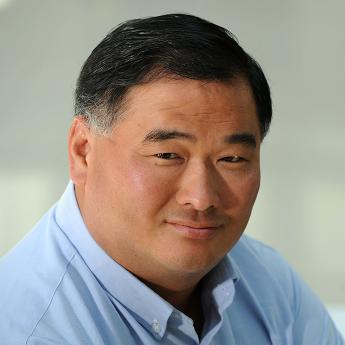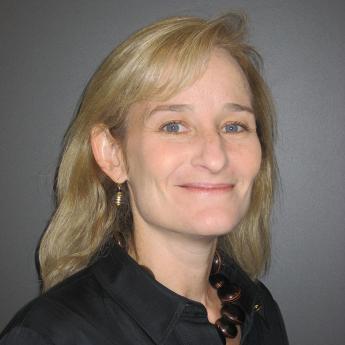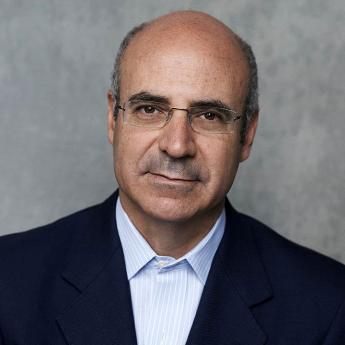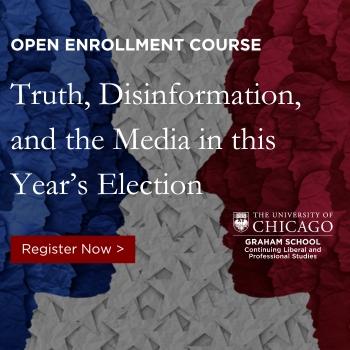Show Notes
Since its inception following World War II, the Doomsday Clock has measured our time until apocalypse in minutes. This year, for the first time, the clock measured our time to midnight in just seconds. Rachel Bronson is the CEO and president of the Bulletin of The Atomic Scientists, the organization that sets the clock. Even though the Clock is a metaphor, she says understanding the meaning behind it is a matter of life and death.
This year, the Bulletin cited two major factors in their decision: the threat of nuclear destruction and the ever worsening problem of climate change. But are we really closer to nuclear destruction than during the Cold War? And is there any hope that we could turn the hands of doom back on climate change?
Subscribe to Big Brains on Apple Podcasts, Stitcher and Spotify.
(Episode published February 12, 2020)
Related:
- The Doomsday Clock, explained
- Doomsday Clock closer than ever to apocalypse
- Video: 2020 Doomsday Clock announcement
- Reddit AMA with Bulletin scientists
- As world awaits Doomsday Clock announcement, a look at its UChicago roots
- Race to the first nuclear reaction
Transcript:
Paul Rand: How far are we from the end of the world? A thousand years? Ten thousand? Or is it much closer to say, fifty years. Some of the smartest scientists in the world say we’re much closer than many of us think.
Announcement TAPE: Today, the bulletin of the atomic scientists moves the hands of the doomsday clock. It is 100 seconds to midnight. 21:04
Paul Rand: The Doomsday Clock has been a well-known piece of popular culture since its inception in the 1940s. It is a symbolic representation of how close leading scientists believe humanity is to destroying itself. And this year, it was moved closer to midnight than ever been before…
Announcement Tape: What we called the new abnormal last year, a dismal state of affairs in the realms of nuclear security and climate change, now has become an apparently enduring, disturbing reality in which things are not getting better.
Paul Rand: Nuclear security and climate change, scientists say these are the biggest threats to civilization combined with an era of alternative facts and misinformation.
Announcement Tape: The continued use in 2019 of untruths, exaggerations and misrepresentations by world leaders to what they deem fake news, has made worse an already dangerous situation.
Paul Rand: According to The Bulletin of The Atomic Scientist, the organization that sets the clock, catastrophe is upon us.
Rachel Bronson: So my organization looks at man-made threats to our existence.
Paul Rand: That’s Rachel Bronson, the President and CEO of the Bulletin of The Atomic Scientist which is housed at the University of Chicago. She says that while the clock may just be a metaphor, understanding the thinking behind that metaphor is a matter of life and death for everyone.
Rachel Bronson: We are fast moving into a period where all the rules certainly on nuclear issues, but in climate as well, and broader disruptive tech are either falling away or in the case of disruptive tech not really even yet created. And it's very reminiscent to 1953 in many ways: a global architecture that doesn't exist in terms of cooperation between countries, lack of trust between countries at a moment where the issues are compounding each other.
Paul Rand: From the University of Chicago, this is Big Brains, a podcast about pioneering research and pivotal breakthroughs reshaping our world. Today, how we got to 100 seconds to midnight. What the doomsday clock means, and what it would take to move it back. I’m your host, Paul Rand.
Paul Rand: Since its inception, The Doomsday Clock has symbolically measured our time till certain destruction in minutes. This year, for the first time, the measurement was made in seconds.
Rachel Bronson: The closest it had been to midnight was 2 minutes to midnight, where we moved it in 2018, and we held it there in 2019. And it was the closest it had been to midnight since 1953 when it was also two minutes to midnight. And it's when the U.S. and the Soviets.
Paul Rand: The Cold War
Rachel Bronson: That's right. And right in the beginnings of the Cold War. So, when the U.S. and the Soviets had exploded hydrogen bombs. And we've been slowly moving the clock closer to midnight.
Paul Rand: This year it moved 20 seconds closer to midnight. With the fear of complete annihilation on the line, you might have the same question I had: why 20 seconds closer exactly? Why not 10, or 30? What does this time really mean?
Rachel Bronson: So why 20 seconds? It's a really great question. So what the Doomsday Clock is set by the Science and Security Board of the Bulletin of the Atomic Scientists. And it's a judgment. There is not some computer somewhere where we feed all of these different facts in and a time pops up. The clock is a metaphor. And we answer the question: are we safer or at greater risk this year compared to last year, and this year compared to all the years we've set it, is humanity safer, or at greater risk? And what time best conveys the message that we're trying to get out there. And that 20 seconds, we really went back and forth. If we moved it 10 seconds, well, it seemed more important. So it's really a judgment. And that's where they got to this sense of being twenty seconds closer.
Paul Rand: You know, it's interesting, as I think through potential analogies on this, we're not all that far off from the Super Bowl this year. And, you know, when you get in-between the one-yard line, you almost assume it's a fait accompli that you're going to get into the in zone, right. Here we are pretty darn close. If I applied the same analogy, you'd just assume you're that close, tt doesn't take much to push it over. Is that how you guys think about this?
Rachel Bronson: Yeah, and the analogy is a really good one for that reason and another one. It’s both on where we are on the one-yard line. But the other analogy that's appropriate, I think, is we’re within the two-minute warning. Any football fan knows there's one game that's played up until the two-minute warning, especially when you're in the fourth quarter. Everything changes, the intensity changes, the play calling changes, and a lot happens in that two minutes. We're kind of in that two-minute warning, which is this is just a different game where we are now. And it really requires our attention. And there is a moment where we can change the course of history, and that's not often true with these kinds of issues.
Paul Rand: So, if this is the end game, what does it look like? How will we know when we’ve crossed the line into midnight?
Rachel Bronson: So, midnight was really easy to define when it was limited to nuclear issues. In truth, midnight was an exchange of nuclear weapons. And that's what drove the creation of the clock. It was really going to be the end of humanity as we knew it. That's very easy when you're talking about a nuclear exchange, minutes, it's all over. We’vebeen really lucky that there hasn't been a strategic exchange. There have been so many near misses.
JFK Tape: This government has maintained the closest surveillance of the Soviet military buildup on the island of Cuba. The purpose of these bases can be none other than to provide a nuclear strike capability against the Western Hemisphere.
Rachel Bronson: So many accidents.
CBS News Tape: A newly disclosed document reviles a US hydrogen bomb almost dedicated near Goldsborough North Caroline back in 1961.
Democracy Now Tape: The so-called Damascus accident involved a titan two intercontinental ballistic missile mishap at a launch complex outside Damascus Arkansas.
Rachel Bronson: But we have been really lucky and we're now moving in the wrong direction.
Paul Rand: To people who grew up after the constant warnings and dread of the Cold War, the threat of nuclear war may seem benign. An ever-present issue, but not pressing or escalating. Are we really closer to nuclear war today, even closer than during the Cold War?
Rachel Bronson: A few days ago, but within the week, the U.S. deployed its first low yield nuclear weapon in a long time on to a nuclear powered submarine that also has other strategic weapons.
Democracy Now Tape: On Capitol Hill House Armed Services Committee Chairman, Adam Smith, said “this destabilizing deployment further increases the potential for miscalculation during a crisis”.
Rachel Bronson: And when I say low yield, and this is important because you’ll see this from time to time in the paper, it can mean as big as a Hiroshima, Nagasaki like bomb or a half as much. It is still multiple times the explosive force of the biggest bomb we have in our arsenal. And we've tended to try to walk away from these kinds of weapons because they have the risk of being felt to be usable.
Democracy Now Tape: Russian deputy foreign minister, Sergey Lavrov responded by saying, “This reflects the fact that the United States is actually lowering the nuclear threshold and that they’re conceding the possibility of them waging a limited nuclear war and winning this war. This is extremely alarming” he said.
Rachel Bronson: So we've just deployed this weapon within the week. A year from yesterday, so just slightly less than a year, the last remaining arms control agreement, New START, that exists between the US and the Russians will expire. The Russians want to extend it. The United States has shown no interest in extending it. Many of us are calling for an extension. And so, the last remaining arms control agreement that helps us verify what the Russians have, helps with the transparency and understanding what their forces are, all that that goes out the window. It has caps on what we can produce, that goes out the window. So, we're losing our arms control architecture. We're losing the transparency. We're deploying new weapons in the United States. Our Nuclear Posture Review, actually, widens the issues to which we would respond could respond with a nuclear response. So, there is so much changing
Paul Rand: Basically, the infrastructure we put in place to protect us from a nuclear war is crumbling. Just in the past year, the trump administration has ended several major arms control deals, it pulled out of the Iran nuclear deal, is threatening to withdraw from The Open Skies Treaty, negotiations with North Korea have stalled and the New START Treaty with Russia is set to expire.
Rachel Bronson: And we've just authorized basically one point three trillion dollars over 30 years to refurbish and refresh and renew in some ways our nuclear arsenal. Every major nuclear power is operating and making decisions as if the use of nuclear weapons is easier or more likely. And so this is a moment where we can actually change that course, because, in 10 years, these are all going to be set in stone. And that's why, going back to our Doomsday Clock on the nuclear side, there's a belief that it's like we're in 1953 again.
Paul Rand: As if nuclear apocalypse wasn’t enough, when Bulletin scientist made their announcement in January, they cited another major global threat in their reasoning. That’s after the break.
(Break)
Paul Rand: The mandate of the Bulletin of The Atomic Scientists is to track global threats that could lead to humanity’s ultimate destruction. In the recent decade, that mandate has pushed them to move beyond just nuclear war to focus on another growing threat.
Announcement Tape: To test the limits of earths’ habitable temperature is madness. It’s a madness akin to the nuclear madness that is again threatening the world.
Paul Rand: That threat is climate change.
Announcement Tape:Despite these devastating warnings, and although some governments are echoing many scientists use of the term “climate emergency”, their policies are hardly commensurate to an emergency. A UN report was released underscoring what was already known, the pledges to curb greenhouse gases that governments committed to pursue by 2030 under the Paris climate agreement…they would need to be scaled up eight-fold to be consistent with the agreed aiming of keeping warming well below two degrees.
Rachel Bronson: We added climate to the clock in 2007. But what does midnight for climate look like? It's much harder to have a kind of before and after midnight clear sense of what that means. That being said, this metaphor is important because for the climate, folks, there are tipping points that you can't come back from. And you won't feel those effects until years out, but it'll be very difficult if even possible to recover from. And that sense of before and after for the climate experts, they still talk in those terms. It's just that we won't feel that for some decades.
Paul Rand: It’s particularly interesting that there’s actually a point where nuclear power and climate change meet, with important implications for both issues.
Rachel Bronson: Nuclear power right now is so desperately needed in terms of energy in this carbon constrained environment that we're in, right. We desperately need nuclear power because it doesn't emit carbon. But at the same time, we've been unable to fully manage its risks. The public doesn't trust it. We're worried about terrorism, we're worried about accidents, we're worried about meltdowns. Well, if we could manage those risks, we'd have this really unhindered energy source. But we are worried about those risks. And so we're not using nuclear power to its fullest advantage, which is exactly the kinds of issues that we are really interested in, because good policy should be able to help us get there. We just haven't been able to develop the political architecture or apparatus to make us feel safe. What's fascinating is that Sweden has found ways to kind of bury their nuclear waste, whereas here in the United States, we still can't figure out what to do with our nuclear power plants and what to do with their waste. And we're shutting down nuclear power plants that could be operating because they're not cost effective right now, but they're also not emitting carbon. So right now, we are in a fight to keep open nuclear power plants that have been decently regulated, safe in the United States just for the sake of because we don't like them. And it's so disruptive to our energy transformation, we need a bridge to all these renewables, and we need to find ways to power our economy at a moment where battery storage doesn't allow us to fully harness the power of other renewables. I do worry about that. I do worry about when there's not kind of a strategic view on how are we going to get to this energy transformation that we need. Because nobody thinks, at the moment, that solar and wind alone is going to do it.
Paul Rand: Are there other potential categories are a bit beyond nuclear war and climate change that you could see creeping into this?
Rachel Bronson: Yeah, absolutely. Around 2007 when climate gets introduced into the Clock, we were also really focused on bio-threats and the Board was really grappling with…
Paul Rand: And what do you mean bio-threats…
Rachel Bronson: Pandemics. So, you know, we're talking about coronavirus right now. But for my organization, The Bulletin of The Atomic Scientists, they're really interested in can these be created in labs? And what if they're used as weapons to wipe out humanity? Should we be thinking of bio-threats in that way? The experts are saying, oh, I don't know that we have this under control anymore. The technology changed so quickly. We're actually concerned about where this is going, how this might be used. Like, things like genetic engineering. Right. If we think about threats to our existence, like what does it mean to be human, and what are the threats to humanity, the advancements in CRISPR and genetic engineering, the future of artificial intelligence? All of these are really kind of fascinating to us. And this goes back to our founders, this is actually about political action. Science is moving really quickly and that's going to bring huge benefits, but only if we can manage its risks.
Paul Rand: The Bulletin of The Atomic Scientists was established after World War II as a way to not only warn the public about these risks, but also to offer solutions and push politicians to enact them. That history and those solutions, after the break.
(Break)
Rachel Bronson: The scientists who started the Bulletin of The Atomic Scientists, many of them were involved in the Manhattan Project. They literally created the atomic weapons that were dropped on Hiroshima and Nagasaki.
VINTAGE TAPE: That’s the atomic bomb exploding at Nagasaki. The film was taken in a B29 many miles away. All who see this picture can judge for yourselves the extent to of the menace to civilization of this new weapon.
Rachel Bronson: And they were very, very quick to realize where the technology was going. Right. And they were also very engaged politically.
Vintage Tape: Civilized people can only demand that such power be used not toward their obliteration, but to the benefit of mankind.
Rachel Bronson: So the bulletin was founded in 1945 and it was literally a six page black and white bulletin that we distributed. In 1947, it's the time of Time magazine and Life magazine and we've got this great subscriber base, we decide we want to turn our bulletin into a magazine. We need a cover. So the first cover of the first magazine is the Doomsday Clock. That’s where it was created, and it was created to be a great cover. It was created by the wife of a Manhattan Project scientist. She understood the urgency he felt, and his colleagues felt about this technology they had created. And she was trying to figure out what would convey that urgency, so she creates a clock and she sets it at seven minutes to midnight. So that's our starting point. Seven minutes to midnight. There's an interview where she says because it looked good to her eye, her design eye, which it does. But also because that design conveys both the urgency that they feel but hope that we can turn it back right. And it was also I mean, it was also it was a cheap design to recreate. We were like a bunch of scientists at the University Chicago. We didn’t have a lot of money or anything. So this clock gets it gets copied on each edition just because all she did was change the color and her daughters would pick what color they like. But the in nineteen forty-nine, the editor moved the clock forward and that's when the Soviets had tested their first atomic bomb.
Vintage Tape: President Truman dramatic announcement that Russia has created an atomic explosion sends reports racing for Flushing Meadow where Russia’s Vishinsky arrives to address the United Nations.
Rachel Bronson: So suddenly this static image becomes dynamic. And someone had asked the original founder of the bulletin like what's the purpose of the bulletin? And he gives three reasons. One, it was to engage the public on nuclear energy. The second, which is so interesting to me, was to get scientists to engage in the politics of the day and talk to each other about these issues. Even today, there's this issue, do the experts belong in the ivory tower or should they come out and engage? And so, the bulletin was on record very early as saying we want the scientists to engage in these kind of policy discussions. And then the third issue, which is the one that animates me the most, is to manage Pandora's box of modern science. So that's the charge of the bulletin.
Paul Rand: So how has that charge been going? Are there any trends the Bulletin has seen in the last year to suggest that maybe, in the future, we could turn the hands of the clock backward, away from midnight?
Rachel Bronson: We do point out a bright spot and that's in the climate space. And our experts really talked about this, about, you know, is this something we would move the clock away from midnight? On the climate space, what the what our experts recognized was there is a growing global awareness that that we are changing our climate and there's things that we can and need to do. Especially among the youth, the kind of youth movements that are embracing climate
CBS News: Groups of students across America say they will skip class tomorrow for the first national school strike over climate change.
Rachel Bronson: Is leading to, not enough political action, but you're seeing it be introduced into the public sphere.
Greta Thunberg Tape: The young people are starting to understand your betrayal. The eyes of all future generations are upon you and if you choose to fail us, I say we will never forgive you.
Rachel Bronson: We believe that that kind of on the street marching, sitting outside parliaments and missing school to do so, the kinds of large numbers that we're seeing who are owning this issue and putting pressure on their leaders to try to engage, is very promising. So all that's to say is public engagement still really matters. And so, in the climate space, that kind of awareness of the role and power that they have, even though it seems very out of reach, is actually very powerful. Wed’ love to see the United States reengage in the Paris agreements around climate. We'd love to see the U.S. sitting down with the Russians and if not extending New START, which we'd love to see them extend just to buy us some breathing room but then what substitutes for these arms control agreements that have fallen away. The only thing that's going to move the politicians is if we all tell them that we care about these issues.
Paul Rand: You know it’s interesting that you mentioned the politicians because here we are moving into election season. And if you were going to sit down and say to the presidential candidates, I need answers on these topics, and we really think that for the American public to make a determination on who should be president, you need to answer these questions. What questions would you put on that list?
Rachel Bronson: Ask them who their science adviser would be. So, we don't have a science visor anymore in the United States.
Paul Rand: Who was our last science advisor?
Rachel Bronson: So our last science advisor was John Holdren. He's at Harvard now. But if you look at the arms control agreements and issues on climate, we've always relied on our key advisers with deep scientific knowledge not to dictate the direction we go, these are political problems, but to inform them. And so I think it's absolutely fair to ask the candidates, well, who are you considering to be your science adviser, your cabinet in general, but I'd be very interested ot know who they’re thinking of.
Paul Rand: What else would you want to know? So that’s a key question, if you were to say I need to know positions on x, y and z.
Rachel Bronson: So this is going to be a really hard one for them to answer. And you could see this in the Democratic debates, but we've walked away for from the Iran deal. It's unlikely that we can get it back at this point. So how do you start again with Iran? Iran is clearly moving now towards rethinking starting up their nuclear program. So what does that look like?
Paul Rand: What about on climate change?
Rachel Bronson: On climate change how would you direct the American government and the private sector to be investing in terms of new technologies needed around climate change? Not just do you believe in climate change, but what are what are you going to do? What's your first few days? What's your plan? How are we going to invest? The United States, this is true globally, but the United States is facing a massive energy transformation that's going to be huge winners and losers. How do we do this so we can move forward as a country without just, we're not going to do it by ripping up all of our infrastructure. So how are we going to get there? My favorite question because I find it a fascinating question, is how do you think about nuclear power? For Democrats, this is really hard. The Democratic base is not pro nuclear power for the most part. Certainly, on the left, it's just viewed as really evil. Well it's hard for me to see how you get a true energy transformation without nuclear power. So asking the candidates how they're going to get there is something that I find really fascinating. I'd love to hear more of. And then for Republicans, we're not having this discussion, but they are a lot more comfortable with nuclear power. But they're also comfortable with drill, baby, drill. So, we're not moving forward with a kind of coal future with the way it's currently configured. And we do need to find ways to keep some of the carbon in the ground. So how are they going to do it on their side? That's a conversation they're not having. But if they could have that conversation, it's a really important conversation to have about what's our carbon future.
Paul Rand: Is there ever a time that you could see that you could retire the clock? Or is it we that it will never be retired because the genie is out of the bottle?
Rachel Bronson: Well, after the Cold War in 1991, we had moved it back to 17 minutes to midnight, and we would have loved to have kept moving it back up further. And so I think these issues are like crime or poverty. It never goes away. But it can be less horrific, or more horrific. And so to that, there's probably always going to be a clock. But it wouldn't be that interesting if we were moving it from 17 minutes to 19 minutes, to 20 minutes, to 25. And maybe there's a way we can, you know, that would be really exciting. That is just getting better and better. So, I shouldn't say it wouldn't be as exciting. Maybe it would be. We just have we haven't been there. So, 20 20 is a fascinating year as the fiftieth anniversary of Earth Day. It's the fiftieth anniversary of the nonproliferation treaty, which underpins all treaties, is the seventy fifth anniversary of the dropping of the bombs on Hiroshima and Nagasaki. The seventy fifth anniversary of the U.N. is the seventy fifth anniversary of the Bulletin of Atomic Scientists, because we're responding to those global issues. And so, we've been through this before and we have this opportunity to chart a different kind of history for the next 75 years. And we're in a pretty precarious place.
Episode List
What Historic Pandemics Could Teach Us About Coronavirus, with Ada Palmer (Ep. 48)
A historian explains what we can really learn about COVID-19 from the Black Death pandemic
A Crisis Management Expert’s Advice on Handling Coronavirus, with Daniel Diermeier (Ep. 47)
A world-renowned scholar gives advice to business and political leaders on handling the COVID-19 pandemic.
How Students and Schools Can Recover From Coronavirus, with Elaine Allensworth (Ep. 46)
A leading education expert discusses how families and teachers are adjusting to remote learning.
Trump, Coronavirus and the Cost of Ineffective Government, with William Howell (Ep. 45)
Leading presidential scholar thinks coronavirus has revealed why our governmental institutions need to be reformed.
How Coronavirus Is Exposing Our Racial Disparities, with Monica Peek (Ep. 44)
Dr. Monica Peek was studying racial health disparities before the coronavirus outbreak. Now her research is more important than ever.
Coronavirus Shows Why We Need To Rethink Health Care, with Katherine Baicker (Ep. 43)
Leading UChicago health economist explains why our public health infrastructure wasn’t ready for coronavirus, and what we need to change for the next pandemic.
What Rats Can Teach Us About Empathy and Racism, with Peggy Mason (Ep. 42)
What can rats teach us about empathy? As one University of Chicago neurobiologist discovered, we can learn from them a lot.
Why the coronavirus could send China’s economy back to the ‘80s, with Chang-Tai Hsieh (Ep. 41)
A University of Chicago economist explains why the coronavirus is one of the most pivotal moments in China’s economic history.
Why the Doomsday Clock is Closer to Apocalypse Than Ever, with Rachel Bronson (Ep. 40)
Even though the Doomsday Clock is a symbolic metaphor, understanding the meaning behind it is a matter of life and death.
Vladimir Putin’s No. 1 Enemy, with Bill Browder (Ep. 39)
What turned a powerful businessman into an international advocate for human rights.
